The Growth Stages of a Sunflower
Sunflowers, which are part of the Helianthus genus, are famous for their big, vibrant flowers. They can also follow the sun as it moves in the sky, which is called heliotropism. Flowers add beauty to our gardens and give us important things like oil and seeds.
Life Cycle Overview
The life cycle of a sunflower is a fascinating journey from seed to flower and back to seed. Plants go through a cycle of growth, flowering, and maturation. Each stage brings changes and transformations. The 5 stages of a a sunflower are as follows…
- Seedling Stage: The journey begins with the germination of seeds, giving rise to seedlings.
- Vegetative Stage: The plant undergoes significant growth, developing leaves and stems.
- Bud Stage: The reproductive phase starts, and buds begin to form.
- Blooming Stage: The sunflower unveils its vibrant petals.
- Harvest Stage: The cycle completes with the maturation of seeds, ready for harvest.
Stage 1: The Seedling – The Sunflower Seed Awakens
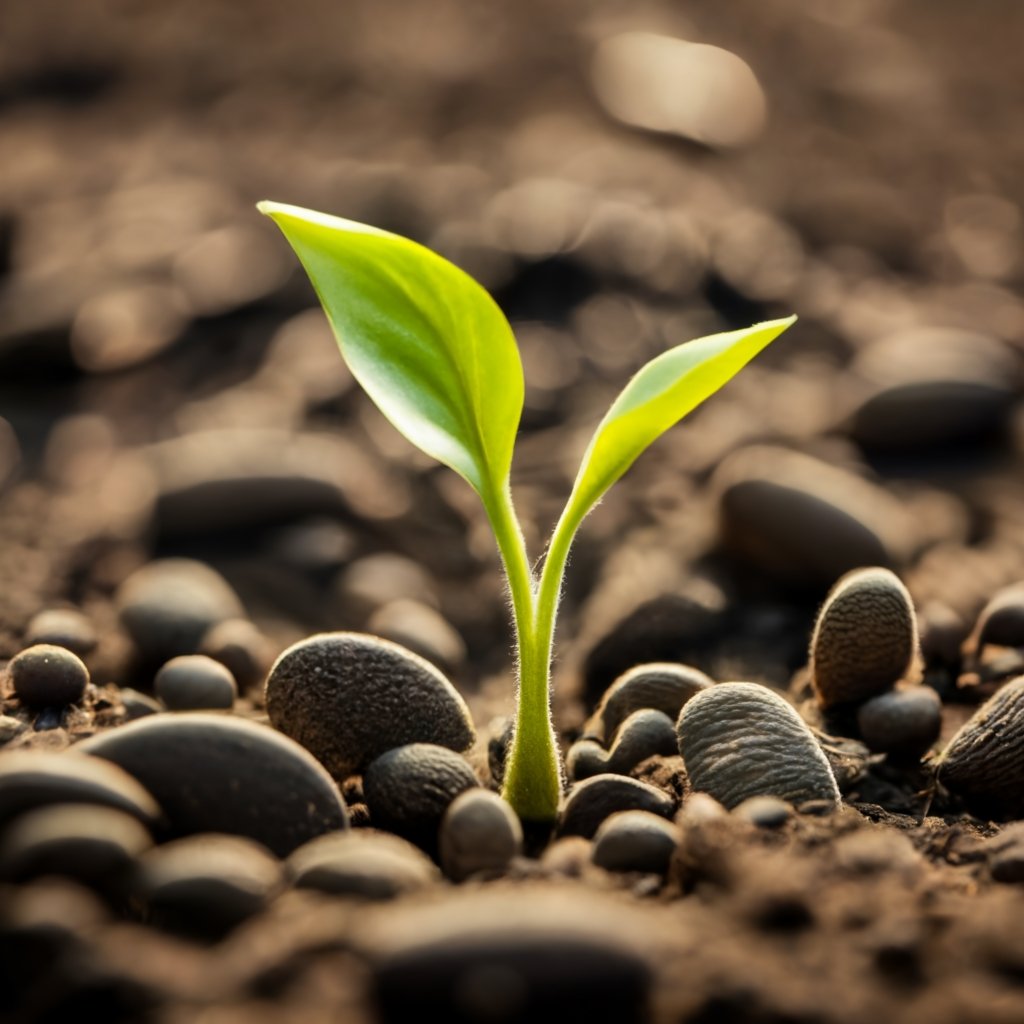
Sunflower growth starts its journey underground as a dormant seed full of potential.
Germination: The Birth of a Seedling
Germination is the initial phase of the seedling stage, a miraculous process where life begins from a tiny seed. It’s the point where the seed absorbs water, swells, and breaks open, allowing a small shoot to emerge. This shoot, known as a radicle, will develop into the sunflower’s primary root.
- Water Intake: The seed absorbs water, initiating germination.
- Seed Swelling: The intake of water leads to the swelling and splitting of the seed coat.
- Shoot Emergence: A small shoot, the radicle, emerges, marking the birth of the seedling.
Initial Growth: Establishing Roots and Shoots
Post germination, the seedling starts establishing its roots and shoots. The roots go deep into the soil to find nutrients. The shoots grow up towards the light and open their first set of leaves, called cotyledons. Leaves are important because they start photosynthesis, which helps plants make food.
- Root Development: Roots extend into the soil, absorbing essential nutrients and water.
- Shoot Ascension: Shoots rise above the soil, reaching out for sunlight.
- Leaf Unfolding: The first leaves, or cotyledons, unfold, initiating photosynthesis.
Nurturing the Seedling: Care and Conditions
Proper care during this stage is paramount. The seedling requires adequate water, light, and nutrients to thrive. Overwatering or underwatering can be detrimental, and the right balance is key. Providing the right amount of light is also crucial as it fuels the photosynthesis process, enabling the seedling to grow and develop.
- Balanced Watering: Maintain optimal soil moisture to avoid overwatering or underwatering.
- Adequate Light: Ensure the seedling receives sufficient light to facilitate photosynthesis.
- Nutrient Supply: Provide essential nutrients to support healthy growth and development.
During this stage, the sunflower seedling is fragile but strong, preparing for its beautiful future flower. This is an important stage of small, important changes that slowly lead to the beautiful blooming.
Stage 2: The Vegetative Stage of the Sunflower Life Cycle
After the seedling grows roots and its cotyledons unfold, the sunflower starts growing. This stage is marked by robust growth and the development of the plant’s structural components, setting the stage for future blooming.
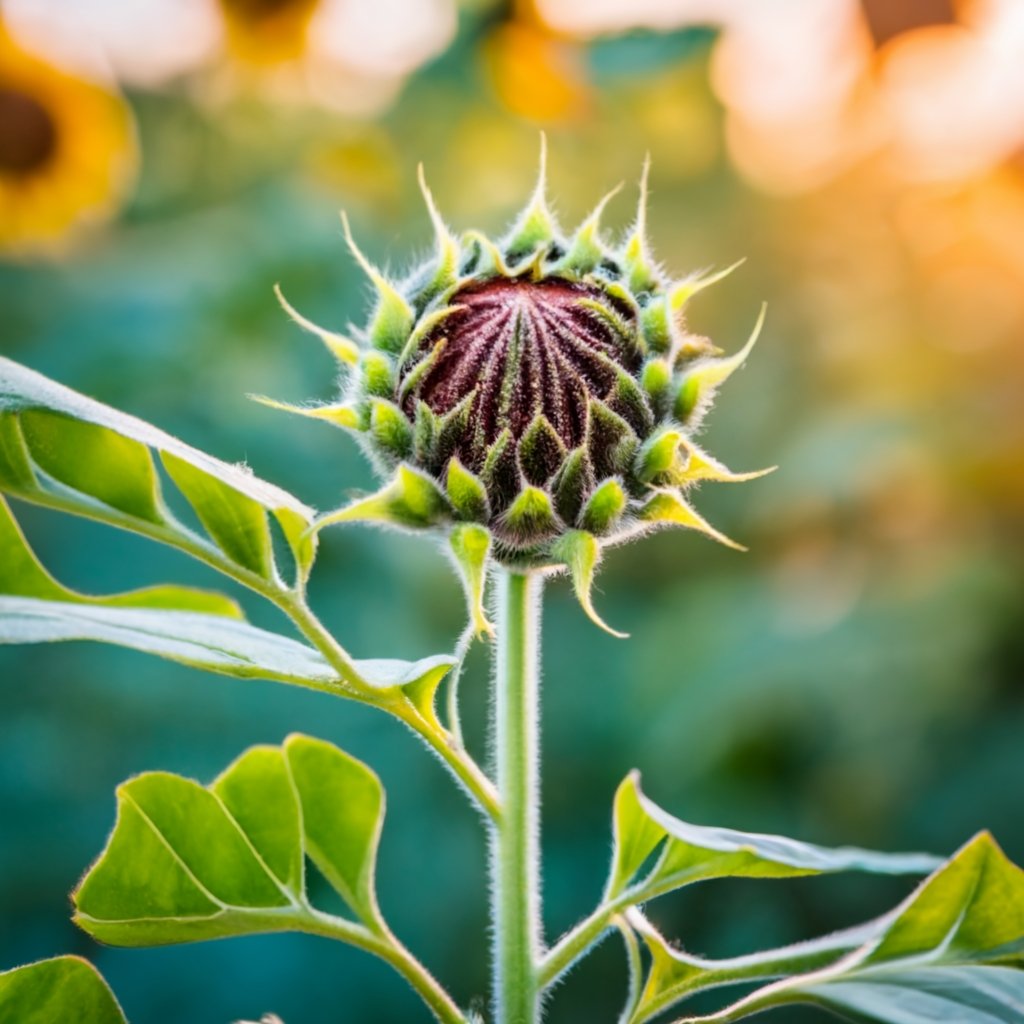
Leaf Development: The Solar Panels of the Plant
During this stage, the sunflower grows new leaves that are different from the first ones. The plant’s leaves act as solar panels, absorbing sunlight to power photosynthesis and promote growth.
- Leaf Unfurling: True leaves start to unfurl, increasing the plant’s ability to capture sunlight.
- Enhancing photosynthesis: More leaves help the plant convert sunlight into energy more efficiently.
Stem Growth: The Supportive Backbone
At the same time, the sunflower’s stem grows a lot to support the leaves and flower. The stem needs to be strong and resilient to support the weight of the flowerand withstand environmental conditions.
- The stem grows taller to position the leaves and future bloom towards the sunlight.
- Stem Strengthening: The stem thickens and strengthens to support the growing plant structure.
Optimal Conditions for Vegetative Growth
Maintaining optimal conditions is crucial during this stage. Adequate sunlight, water, and nutrients are essential to ensure healthy vegetative growth. The plant grows strong during this stage, which leads to a beautiful bloom later on.
- Sunlight: Ensure the plant receives ample sunlight for efficient photosynthesis.
- Watering: Maintain consistent moisture levels in the soil, avoiding overwatering or underwatering.
- Nutrient Supply: Provide the necessary nutrients to facilitate healthy growth and development.
In the vegetative stage, the sunflower grows and develops to prepare for blooming later. It’s a stage where the plant invests in its infrastructure, preparing for the spectacular display of beauty that is to follow.
Stage 3: The Bud Forms
The sunflower finishes growing and starts to make buds, which means it’s ready to reproduce. This stage is pivotal as it sets the foundation for the formation of the sunflower’s iconic flower.
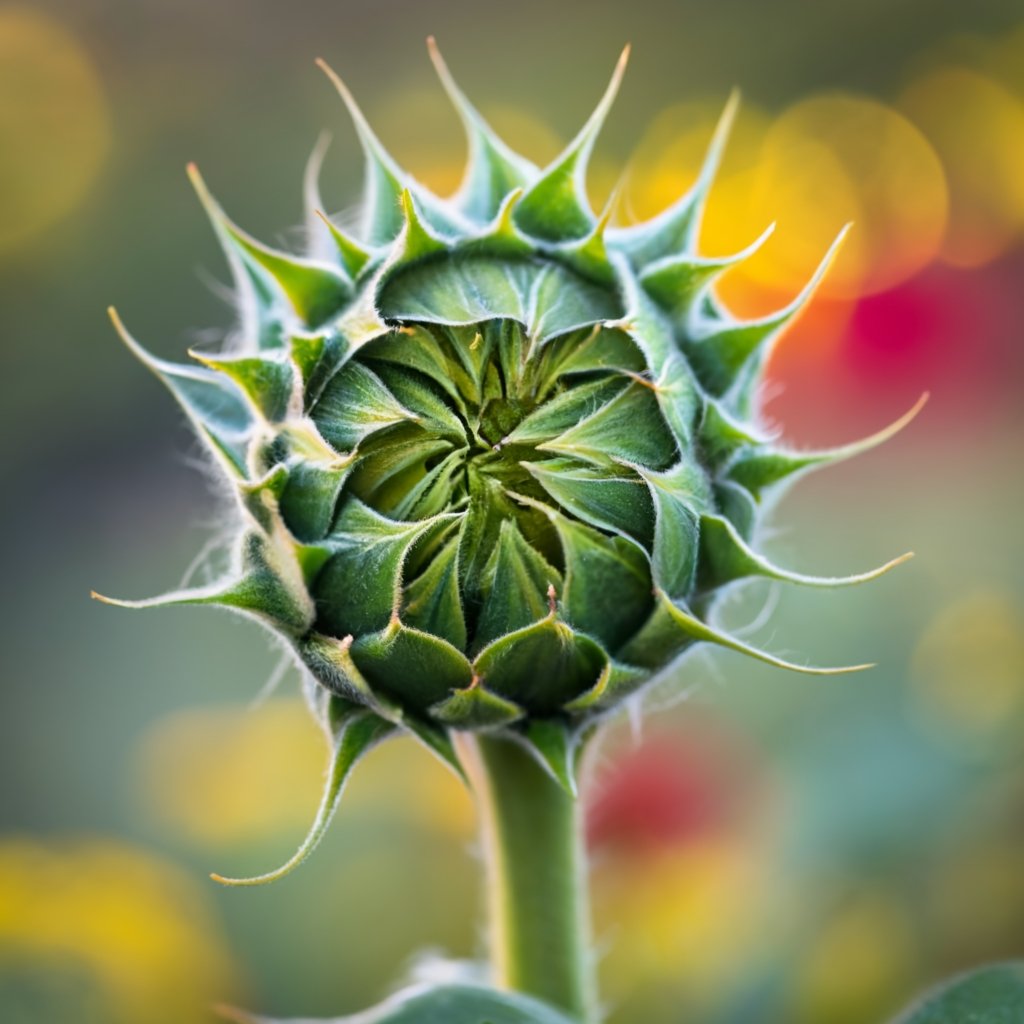
Formation of the Bud: The Prelude to Blooming
The bud stage is characterized by the formation of a compact, enclosed structure, housing the future flower. It’s a delicate phase where the plant starts developing reproductive organs, preparing to unfold its vibrant petals.
- Development: The plant forms a bud at the top of the stem, enclosing the developing flower.
- Organ Formation: Within the bud, reproductive organs start to form, laying the groundwork for blooming.
Environmental Influence: The Role of Light and Temperature
Environmental conditions, like light and temperature, greatly affect the development of the bud. The right balance of these elements is crucial for it to develop properly and transition to the blooming stage.
- Light Sensitivity: This stage of the development is sensitive to light; adequate exposure is essential for proper growth.
- Temperature Regulation: Maintaining optimal temperature is crucial to avoid any developmental hindrances.
Nurturing the Bud: Care and Considerations
Proper care during this stage is paramount to ensure the healthy development of the bud. To help plants bloom, it’s important to give them enough water, nutrients, and protection from harsh weather.
- Adequate Watering: Ensure the soil is consistently moist but not waterlogged.
- Nutrient Supply: Continue to supply essential nutrients to support bud development.
- Protection: Shield the bud from extreme weather conditions to prevent damage.
The bud stage is a time of anticipation and careful nurturing, a prelude to the spectacular bloom that is to come. It’s a phase where the sunflower invests in its reproductive capability, preparing to reveal its radiant beauty to the world.
Stage 4: Blooming – The Flower Stage
During the blooming stage, the sunflower reaches its peak and reveals its vibrant bloom, adding color to the surroundings. It’s the stage where the sunflower is at its most picturesque, symbolizing happiness and positivity.
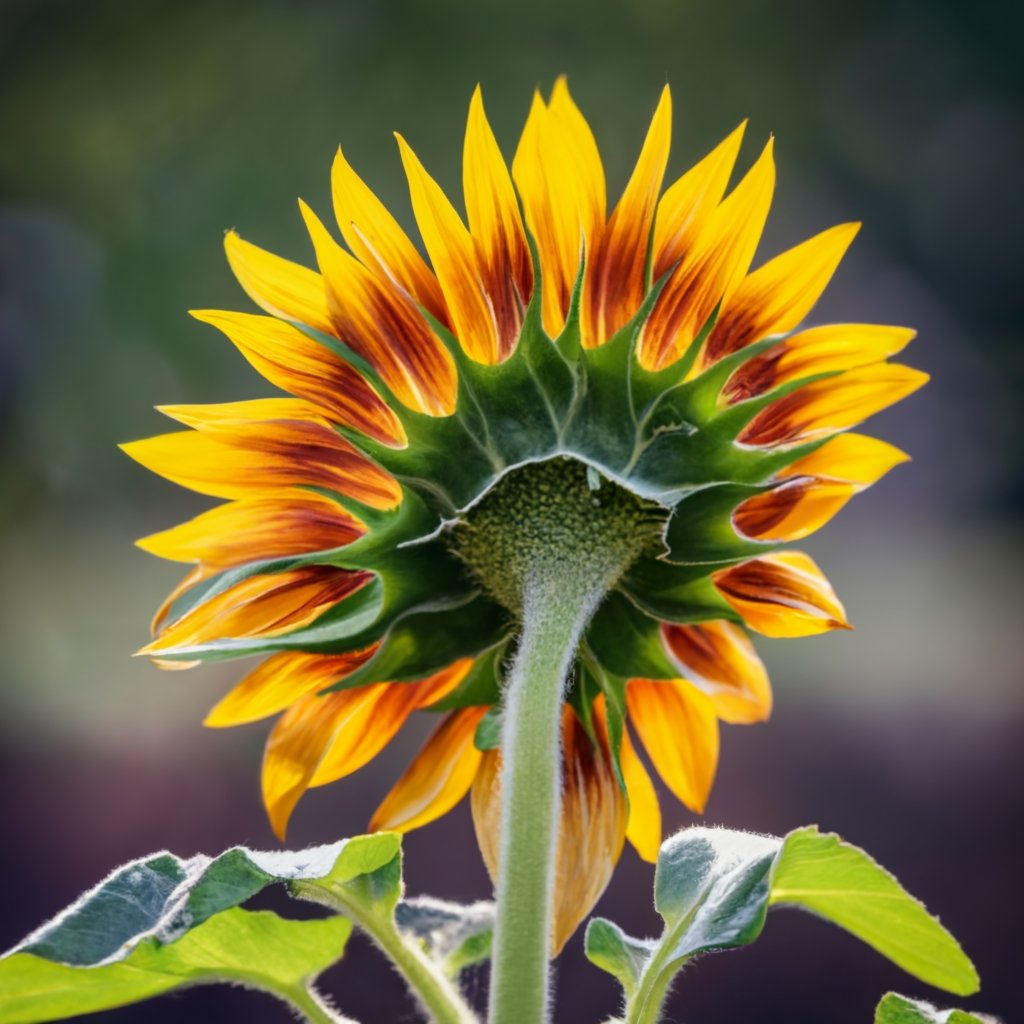
Unveiling Beauty: The Opening of the Bloom
The bloom stage is marked by the opening of the bud, revealing the sunflower’s iconic yellow petals. It’s a spectacular display of nature’s artistry, where the flower head turns its face to the sun, basking in its warmth and light.
- Petals Unfold: The enclosed petals within the bud begin to unfold, showcasing the sunflower’s beauty.
- Sun Tracking: The bloom exhibits heliotropism, turning its face towards the sun throughout the day.
Pollination: The Dance of Bees and Breeze
Blooming is not just about aesthetics; it’s also about reproduction. The sunflower bloom attracts bees and uses the breeze to keep reproducing and survive.
- Attracting Pollinators: The vibrant bloom and its nectar attract bees and other pollinators.
- Wind Pollination: The sunflower also utilizes the wind to disperse its pollen to other flowers.
Enjoying the Bloom: Aesthetic and Symbolic Value
The blooming sunflower is a sight to behold, symbolizing adoration, loyalty, and longevity. It’s not just a visual treat but also a source of inspiration, representing the pursuit of light and happiness.
- Symbolism: The sunflower represents positivity, adoration, and the pursuit of light.
- Visual Appeal: The vibrant yellow bloom is a visual delight, adding aesthetic value to gardens and landscapes.
The blooming stage is the sunflower’s moment of glory, a time when it displays its full beauty and plays a crucial role in the perpetuation of its species. It’s a fleeting yet impactful phase, leaving a lasting impression with its symbolic and aesthetic appeal.
Stage 5: Harvest – The Completion of the Life Cycle
The harvest stage signifies the culmination of the sunflower’s life cycle. It is the time when sunflower seeds are ready to be harvested. The plant finishes its life journey, leaving seeds for the next generation.
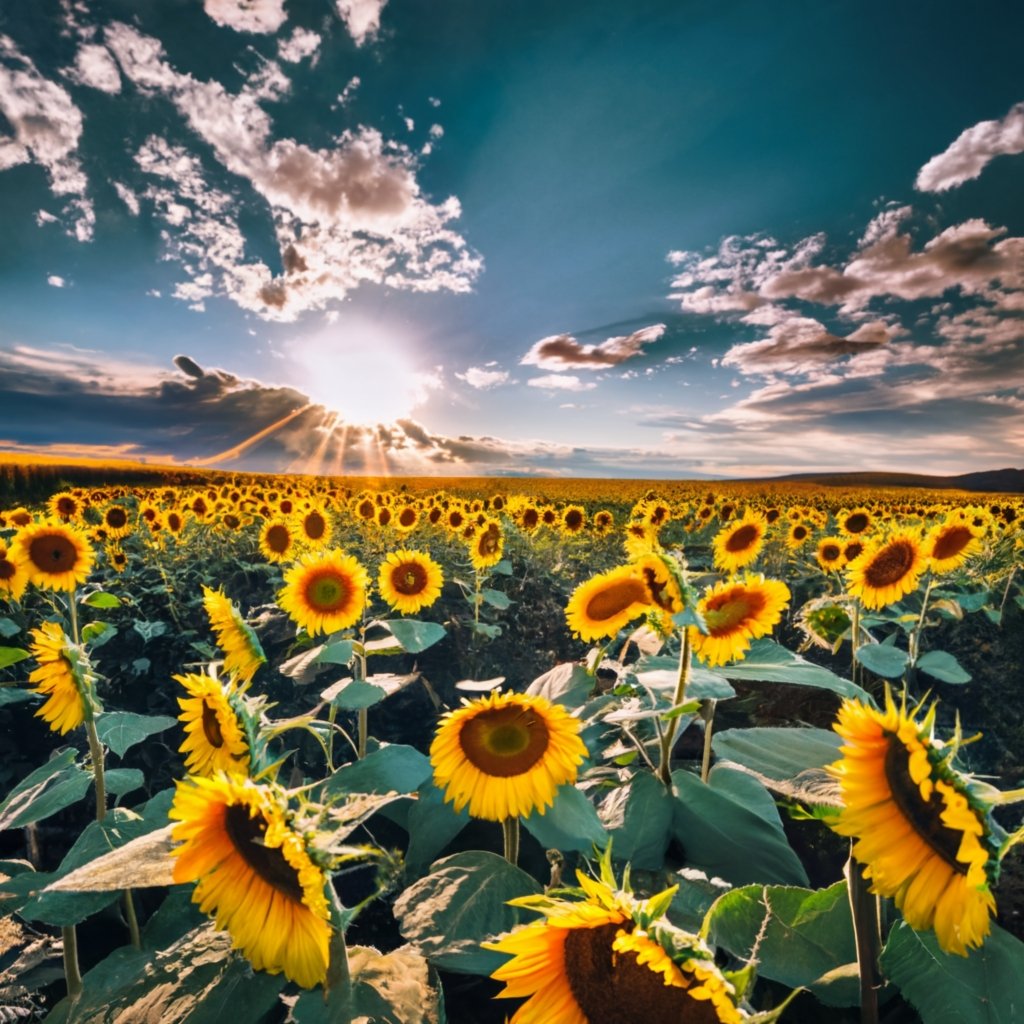
Reaping the Fruits: Harvesting Sunflower Seeds
The sunflower’s head, heavy with seeds, bows down, signaling that it’s time for harvest. The seeds, rich in oil and nutrients, are collected for various uses, marking the completion of the growth cycle.
- Seed Maturation: The seeds within the sunflower head mature and are ready for harvest.
- Collection: The mature seeds are collected for consumption, oil extraction, or replanting.
The Cycle Continues: Planting the Next Generation
Post-harvest, the sunflower leaves behind seeds that hold the potential to grow into new sunflower plants. This ensures the continuation of the species, allowing the cycle of life to perpetuate.
- Seed Dispersal: The harvested seeds are sown, naturally dispersed, or stored for future planting.
- Germination: The seeds undergo germination, marking the beginning of a new sunflower life cycle.
The Final Bow: What Happens When Sunflowers Die
After the harvest, the sunflower plant withers away, having fulfilled its purpose. It’s a natural process where the plant returns to the earth, contributing to the soil’s fertility.
- Withering: The remaining parts of the sunflower plant begin to wither and decompose.
- The decomposed plants make the soil better, giving nutrients to future plants.
During the harvest stage, the sunflower fulfills its life cycle and ensures the continuation of its lineage. It’s a reminder of the transient nature of life and the perpetual cycle of growth, fruition, and renewal.
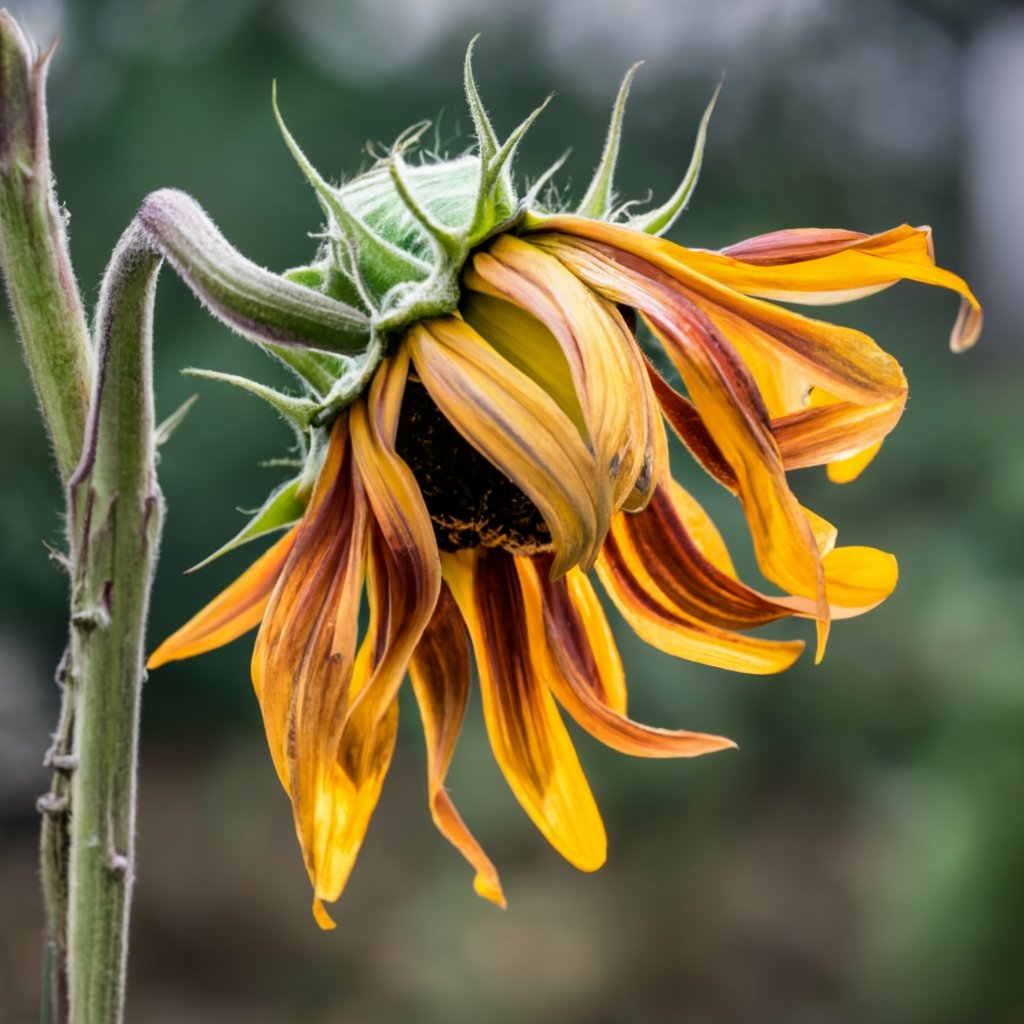
Conclusion
The journey of a sunflower, from a tiny seed to a radiant bloom, is a remarkable spectacle of nature’s cycle. The sunflower goes through different stages in its life, starting from when it sprouts to when it blooms and is ready for harvesting. Each stage shows how strong and beautiful this plant is.
Reflecting on the Journey
The sunflower’s life cycle is a harmonious sequence of growth, development, and renewal. It’s a journey marked by the pursuit of light, the unfolding of beauty, and the fruition of seeds, symbolizing hope, adoration, and continuity.
- Cycle of Life: The sunflower’s journey is a cyclic process, ensuring the perpetuation of its species.
- The lovely flower brings joy and beauty to our lives and surroundings.
Final Thoughts
Sunflowers, with their radiant blooms and steadfast nature, are more than just visually appealing flora. They are symbols of positivity, resilience, and the perpetual cycle of life. Their journey, starting from when they grow to when they mature, reminds us that life is short but beautiful. It inspires us to look for happiness and make the world more beautiful as we go.
